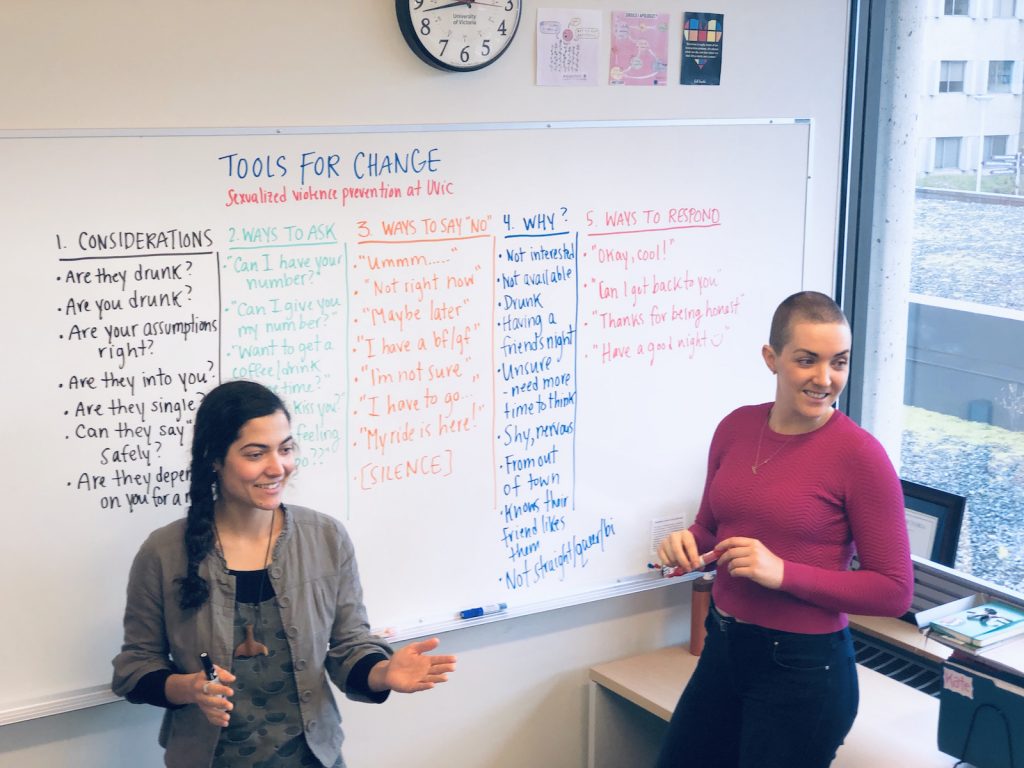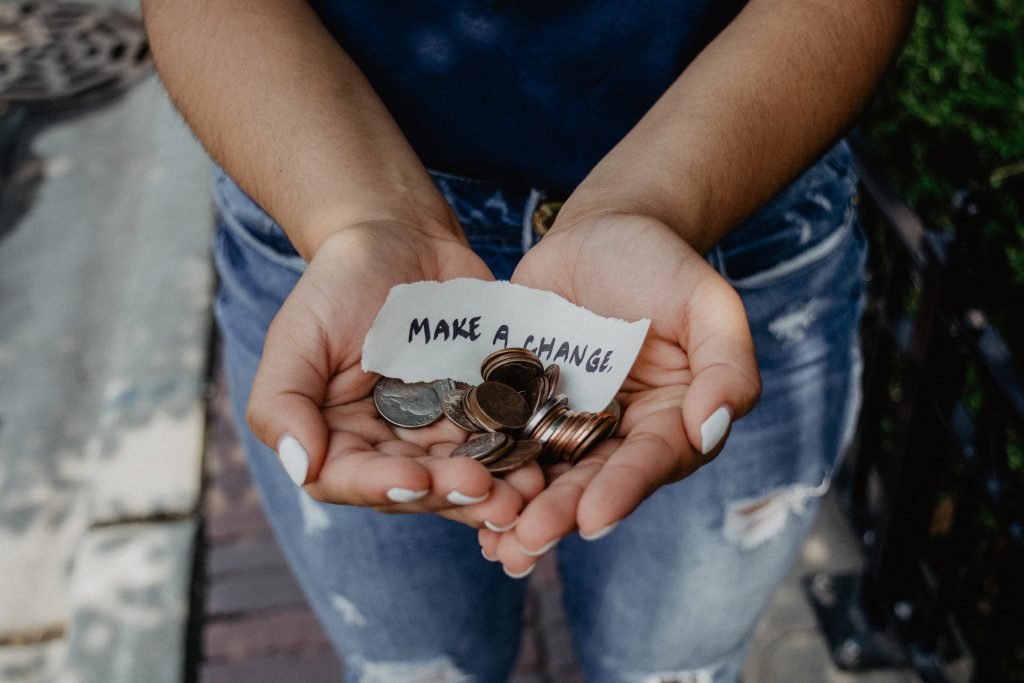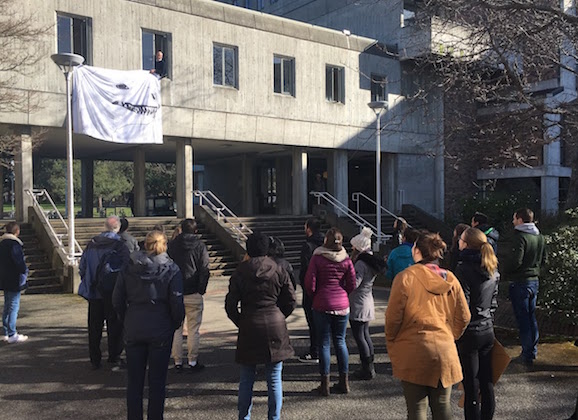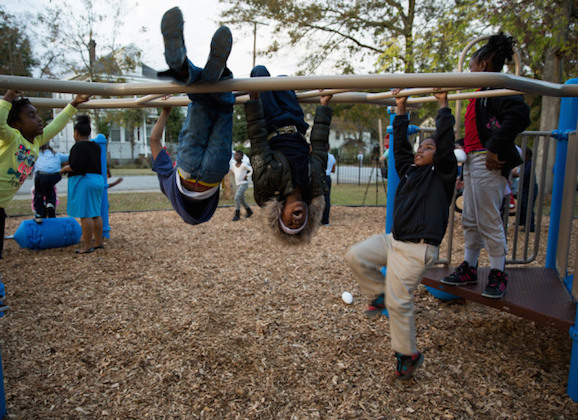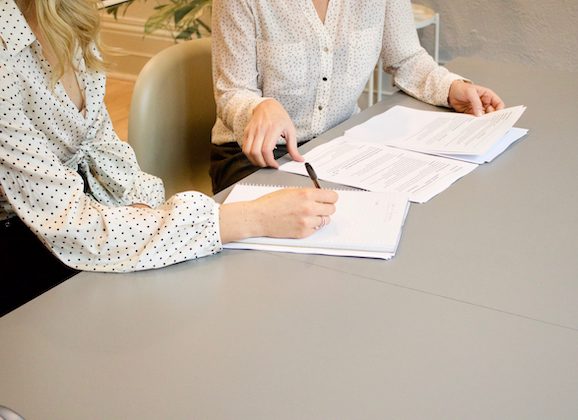If You Want to See Change, You Need Your Tools First
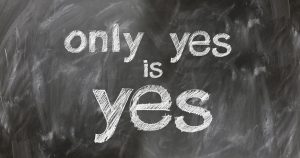 UVic’s Equity and Human Rights and Sexualized Violence Prevention resources launched a new workshop on January 27th called “Tools for Change.” The workshop is an initiative to give students an opportunity to gain knowledge and learn about what they can personally do to prevent and challenge beliefs surrounding sexualized violence.
UVic’s Equity and Human Rights and Sexualized Violence Prevention resources launched a new workshop on January 27th called “Tools for Change.” The workshop is an initiative to give students an opportunity to gain knowledge and learn about what they can personally do to prevent and challenge beliefs surrounding sexualized violence.
Upon first hearing about the workshop, I was both incredibly excited and slightly confused.
I was excited because this is giving students the ability to act and actually do something about some of the current sexualized issues in the world which movements such as #MeToo have begun to address.
I was confused because although I had heard the terms “sexual harassment” and “sexual assault” before, I had never heard the term sexualized violence and I, as many of the other participants in the workshop, was not quite sure what it meant.
So, I was ready to learn.
In order for the facilitators to provide the skills and knowledge necessary to prevent sexualized violence, first they had to define what it was. On the board at the front of the classroom, UVic’s definition was displayed front and centre: “Sexualized violence includes any non-consensual, unwanted, actual, attempted, or threatened act or behaviour carried out through sexual means or by targeting a person’s sex, sexual identity, or gender identity/expression. This may or may not involve physical contact.”
The facilitators of the workshop stressed that UVic defines sexualized violence broadly to set a high bar of expectations. Violence is a spectrum, but no part of that spectrum includes tolerating the behaviour.
If the spectrum metaphor is a little unclear, let’s look back at the definition. Sexualized violence does not have to include any physical contact. One can be violent without having to use their fist. Catcalling is violence just as abuse is violence – one may be deemed more serious but they are both harmful and they both require prevention strategies.
After defining the meaning of sexualized violence, some discussion is fostered around the importance of consent, and the value of the word “no”, followed by the prevention portion of the workshop.
This discussion is incredibly interactive as the workshop is majorly activity based. Different scenarios are posed to the group who then work together to challenge the harmful attitudes and beliefs brought up within the scenario while simultaneously working through prevention strategies.
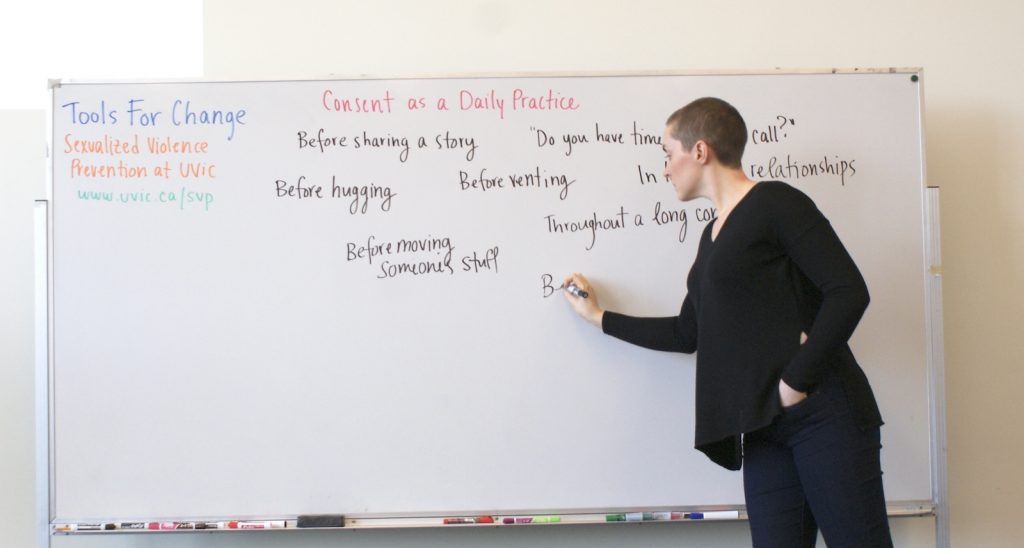
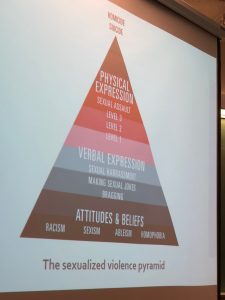 As shown in the sexualized violence pyramid, attitudes and beliefs such as racism, sexism, ableism, and homophobia lead to higher, more severe levels of violence and danger. Ultimately, we cannot tackle the big issues until we tackle our beliefs. Once we tackle our beliefs, the culture surrounding sexualized violence will shift.
As shown in the sexualized violence pyramid, attitudes and beliefs such as racism, sexism, ableism, and homophobia lead to higher, more severe levels of violence and danger. Ultimately, we cannot tackle the big issues until we tackle our beliefs. Once we tackle our beliefs, the culture surrounding sexualized violence will shift.
Attitudes and beliefs are where it all starts. We can not invoke change until we self reflect on our own beliefs. Although it may be difficult to acknowledge your own thoughts that may lead to perpetrating violence, that acknowledgement is the first necessary step in prevention. Changing our thoughts requires an awareness of our thoughts. No one is perfect, but we all have time to work on ourselves.
Tools for Change is designed for students like myself who want to be a part of a culture shift. It is for students who want to learn. It is for students who want to challenge their own attitudes and beliefs. It is for students who want to gain practical tips and a range of strategies to make an impact on minimizing sexualized violence. All in all, this workshop is for all students.
I am beyond appreciative that I attended Tools for Change. The workshop truly opened my eyes to all of the pieces that I was forgetting regarding consent, my own attitudes that contribute to the culture of sexualized violence, and what sexualized violence encompasses. I now feel that I possess a better understanding of the issues and ways in which those issues can be prevented.
If you want to evoke change, you need your tools.
If you would like to receive more information regarding the Sexualized Violence Prevention resource on campus, such as other events and workshops they put on you can:
Visit the Equity and Human Rights department in Sedgewick C115
Send an email to svpcoordinator@uvic.ca
Call 250-721-8218
Check out their website https://www.uvic.ca/sexualizedviolence/index.php
These are all incredibly valuable resources that can provide you information for any of your inquiries.

